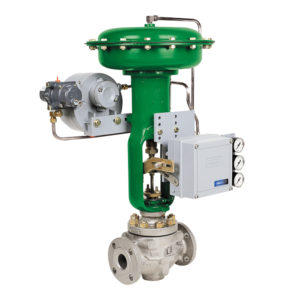
Turnaround. Does the mere word make you shudder? Whatever industry you’re in — oil and gas, refining, chemical processing, etc. — you’ll likely be involved in a turnaround at your plant. And, as you know, turnarounds aren’t business as usual. They present a unique set of challenges, and the stakes are high. Shutdowns are expensive to begin with, and schedule overruns can cost millions of dollars per day.
You can increase your chances of staying on schedule and on budget by understanding common challenges associated with turnarounds and taking proactive steps to address those challenges.
What happens during a plant turnaround?
During a turnaround, part or all of a plant‘s operations are shut down so the equipment can be inspected and, if necessary, cleaned, serviced, repaired, and/or replaced. The ultimate goal is to return equipment — and all of its components — to like-new condition to ensure it continues to operate at peak performance. Achieving this goal requires cooperation among many groups, including the company’s primary employees as well as a slew of outside vendors like OEMs, parts suppliers, and service providers.
In the past, it was normal in many industries to perform a turnaround on a yearly basis. Now, thanks to advances in equipment reliability and maintenance programs, turnarounds happen less often. For example, in the oil and gas and refining industries, many companies are moving to an every 3-to-5-year schedule. In chemical processing, the cycle can be as long as 10 years.
Turnarounds also take varying amounts of time, typically between 10 days and 2 months, depending on the industry, the plant, and the interval between shutoffs.
Common plant turnaround challenges
Shutting down a plant to essentially disassemble, service, and rebuild the equipment is a considerable process. Here are some of the big challenges companies commonly encounter.
A shortage of people with turnaround experience
We mentioned above that turnarounds are being done less frequently now than they used to be. While this keeps production lines up and running for longer periods of time, it also introduces a new challenge: a lack of experience.
Andrew Sloley wrote in Chemical Processing:
“Many process plants now operate for long periods of time between scheduled maintenance. It was routine 50 years ago for facilities to shut down annually or even more often for scheduled maintenance. Today, however, an increasing emphasis on reliability, including more condition monitoring and predictive maintenance, means plants frequently run for 4 to 10 years before having to shut down. So, when a turnaround arrives, it may be the first one for much of the staff.” [emphasis added]
Scope creep
Planning is critical to turnaround success. But stakeholders often have different ideas about project scope, and even the best-laid plans can’t account for 100% of the work that will need to be done. That’s because it’s impossible to know what’s required until you get on the ground and start taking the equipment apart. Once you do, you may find control valves that have unexpectedly corroded or pressure transmitters that have failed due to excess vibration.
Time creep
There’s enormous pressure to get turnarounds completed as quickly as possible. And no wonder, given not only the high cost of the maintenance work, but also the fact that a plant that’s offline isn’t actively contributing to any revenue. Scope creep almost always results in time creep, so tackling that problem goes a long way to solving this one.
Budget creep
We’ve saved budget creep till last because all of the preceding challenges on this list contribute to it.
Budget creep is a big and, needless to say, expensive problem. A 2012 analysis of 750 turnarounds from almost 40 firms worldwide found that the average project exceeded cost estimates by 16%. Given that turnarounds typically costs tens of millions of dollars, 16% represents a significant chunk of change. And that’s just average — in the study, some projects went over budget by more than 40%.
Tips for planning and executing a successful turnaround
Careful planning can help you avoid, or at least minimize, all of the challenges above. The strategies below will put you on the path toward turnaround success.
Make sure everyone is aligned on the objectives
Turnarounds involve a variety of stakeholders, and often those stakeholders all have different priorities. This is one of the biggest contributors to scope creep. To avoid unrealistic expectations, get all of your stakeholders in one room (even if it’s virtual) well in advance of the start date and have them all align on the business objectives.
Later, when you’re planning the specific tasks to be performed during the turnaround, make sure that every task supports the business objectives you identified.
Lean on your suppliers and service providers
It’s unlikely that you’ll have all of the expertise that you’ll need in-house. In fact, the decreasing availability of skilled staff is the top reason turnarounds are expected to get even more expensive in the future.
This is where your relationships with suppliers and service providers really pay off. Bring them in early in the planning phase and keep them involved throughout the process. That way, you’ll be able to leverage their in-depth knowledge of both their equipment and your plant.
Limit the scope as much as possible
Based on a performance analysis study, energy benchmarking and advisory services firm Solomon Associates has identified the key turnaround strategies used by pacesetter organizations. One of them is to limit the scope of work by doing as much maintenance as possible in advance, or postponing some work until later, rather than doing everything during the turnaround.
This approach not only helps you keep the project in scope, it also translates into significant cost savings. “What we have learned is that every dollar of maintenance that can be moved out of the turnaround and into more efficient routine periods will save 33¢,” Solomon’s John Roup wrote in Oil & Gas Journal.
Tasks that can’t be directly mapped back to business objectives should be the first on the chopping block. Roup also recommends moving tasks like maintenance on heat exchangers and certain control valves out of the turnaround schedule, as well as limiting capital project work to 30% of total turnaround cost.
Plan for unexpected equipment failures
Valves, differential pressure transmitters, and other parts may work fine before they’re powered down, but then fail on startup.
Make sure you leave some wiggle room in your schedule so these failures don’t throw the project entirely off course. Once again, strong relationships with your suppliers will prove essential. Vendors that understand common equipment problems that emerge during turnarounds can help you predict and guard against them.
Perform control valve removal and installation simultaneously
A typical turnaround process for parts like control valves has five steps:
- Remove
- Assess
- Repair
- Install
- Startup
Each step is a separate action that requires time and resources.
But there’s an alternative process that allows you collapse the first four actions into a single step. At Automation Service, we call this “Instant Turnaround.”
Here’s how it works:
- During the planning phase, an Automation Service engineer will visit your plant and walk down the valves with you. This will help you determine what valves need service, replacement, or an upgrade.
- We’ll ship you remanufactured valves, controllers, and accessories so you have them the day you need them.
- During the turnaround, your technicians can pull the old valves and install the new ones at the same time.
- We’ll help you recycle your cores for credit that you can use toward your remanufactured replacements.
From our experience, this process can save companies up to 65% on valve product and service costs.
Learn more about our Instant Turnaround service >>
Don’t forget to account for lead times on parts
Obviously, there are multiple factors that go into scheduling a turnaround. If you’re in the middle of turnaround planning, you’re probably knee-deep in CPM or PERT flowcharts.
But even with careful planning, one mistake we see far too often is project managers not accounting for lead times on parts like valves, gauges, and transmitters. Finding out that your turnaround needs to be completed in 6 weeks but your parts have a 12- or 18-week lead time is a nasty surprise.
Fortunately, unlike some aspects of scheduling, lead times are predictable. The key is starting with the desired finish date and planning backward. If you want to finish the turnaround on July 1, what do you have to do on June 30, 29, 28, and so forth, to meet your deadline? Knowing what you will do each day will help you make sure you order your parts with plenty of time to spare.
Don’t neglect your regular maintenance program
Hopefully this goes without saying, but turnarounds can’t replace regular maintenance. In fact, the longer you go between turnarounds, the more important your maintenance program becomes. Performing regular maintenance — and keeping diagnostic and service records for your equipment — will also help you plan your turnaround schedule more accurately.
Keep detailed records for next time
Finally, don’t allow the stress of a turnaround keep you from documenting all plans, work, results, and lessons learned. This information will not only help you assess the success of the project, but also prove invaluable next time, especially if you experience staff turnover in the interim.
_________________________
Turnarounds are always complex. But that doesn’t mean they need to be stressful. Our Instant Turnaround service is gives you piece of mind by providing budget certainty, schedule certainty, enhanced productivity, quality performance, and cost savings. Learn more about Instant Turnaround and sign up for a free turnaround consultation from Automation Service.

